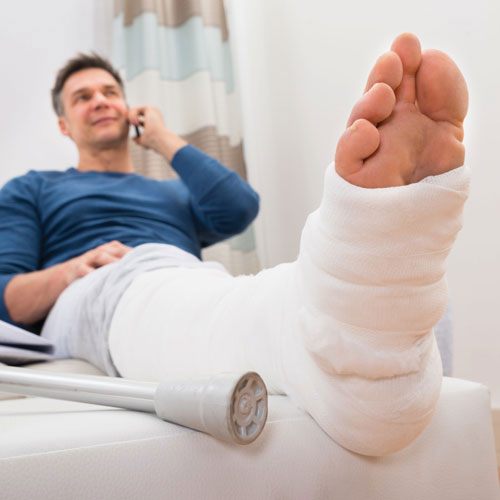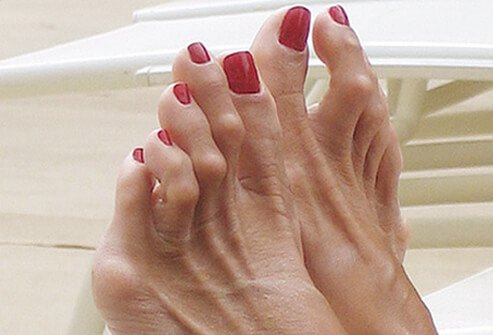
Article Authors: Gordon Slater|Tandose Sambo
“The more you understand yourself, the more silence there is, the healthier you are.”- Maxime Lagacé
All parts of the body are essential. There are some parts of the body however, that we take for granted until they start giving us problems. One such area is our feet. As our primary source of mobility, our legs and feet allow us to do things like move from point A to point B, dance, drive, run a marathon, explore the Alps, swim across the ocean and a myriad of activities that are essential for living and moving.
As the middle of the year approaches, it is always a great idea to ensure that you are taking care of your feet. In the process of dressing up however, we often do things like change our style, including those shoes that we know will hurt our feet, but look good in the name of fashion. There are two conditions that are influenced by the wearing of very tight shoes. Here is a gentle reminder of what happens when you wear incorrectly sized shoes.
BUNIONS
Bunions, are protrusions of the big toe, caused by misalignment of the bones in the foot. Eventually a lump forms on the metatarsophalangeal joint. If the condition persists, it can become painful, and restrict activities such as shoe purchase. Minimally invasive surgical procedures will be the best solution to your condition if you are diagnosed with a bunion.
After an initial analysis, your orthopaedic surgeon will be able to tell if you have any of the following classifications of bunions:
Mild bunion: Treatment involves the bone minimization to eliminate the protrusions, and realignment of the muscles and other soft tissue in the joint.
Moderate bunion: Treatment involves bone incision and realignment of the toe and soft tissue repositioning.
Severe bunion: Treatment involves protrusion removal, bone incision and realignment, and soft tissue repositioning.
Arthritic bunion or big toe joint: Joint fusion facilitated in order to allow the bones to heal. Occasional reconstruction of the joint.
With appropriate surgical procedures, the ability to walk will be restored after the appropriate healing time, as well as reduction of other symptoms that are associated with bunions such as pain or swelling of the joint. From a cosmetic perspective, there will be an improvement in the appearance of the foot. The final appearance, post surgery will be as follows:
The bunion surgery varies in terms of the final treatment. In some instances only a slight numbing of the foot will be necessary. In other instance, anaethesia will be needed in order for the appropriate changes to be done by your surgeon. The treatment usually takes approximately 6 weeks for normal usage of the feet.
Treatment Preparation:
All surgical procedures have detailed plans. Your orthopaedic surgeon will highlight to you the risks and the associated benefits of your procedure. You will then proceed to prepare yourself by ensuring that you are not on any medications that will interfere with the surgery, particularly since you are on anaesthetic for the procedure. A detailed checklist will be provided by your surgeon.
Surgery Day:
With the appropriate plans in place, you are now ready for your surgery. You will be advised on your dietary requirements in the hours preceding the surgery. Following the plan accordingly, and you’ll be well on your way to a speedy recovery. With an average surgery time of approximately two hours per bunion, you will be well on your way to either spend the post op hours at the hospital, or be able to return to your home to heal.
Consult with your doctor if you suspect that you have a bunion. With an appropriate plan, you will be able to have your condition treated, and your health restored.
HAMMERTOES

The types of shoes that you wear can either help your feet or affect them adversely. The hammertoe is the result of wearing incorrectly sized shoes for the feet. If the shoes are too narrow, over time, there will be stresses induced on the second, third or fourth toes. Over time, the toes will have a bend at the middle joint. The angular shape created by the toe, creates a shape much like a hammer.
Hammertoes are actually painful, and over time the muscles, tendons and ligaments will be distorted as the toes are bent out of shape. In the beginning, the hammertoes are actually flexible, but with the conditions sustained, the toes eventually remain in their position. At this point, surgical intervention will be required in order to restore them to their original state. Symptoms include:
- Pain in the toes. As the soft tissue distorts, movement will induce pain.
- Corns and calluses due to the fact that the toes are rubbing against the shoes due to the projections.
- Open sores on the toes
Some root causes of hammertoes are:
Shoes: Tight shoes or high heels are constricting to the toes.
Gender: Women are more prone to hammertoes due to the fact that they are more prone to tight shoes or high heels.
Injuries: During regular activities such as walking, a toe can be stubbed. Additionally, during sporting activities the feet are prone to impacts which can induce hammertoes.
A visit to your orthopaedic surgeon will determine the severity of your hammertoe condition, and determine the next phase of your treatment. Your orthopaedic surgeon will prescribe either minimally invasive surgery, or other simpler treatments.
Hammer toe Treatments Include:
- Toe exercises to flex the joint. Stretch the toes to ensure that the joint is being exposed to both stretches and contractions.
- Changing your shoes from those that are tight and constricted to those that are roomier.
- Shoe inserts to facilitate the re-alignment of the toes.
If these methods don’t work, then minimally invasive surgical procedures can be utilized in order to treat the area. Surgical treatments including methods such as arthroplasty, arthrodesis, tendon transfer, will help to realign the muscles and tendons, and realign any bones that may be in the incorrect position.
In the case of human induced hammer toes, prevention is always better than cure. Take good care of your feet, ensure that you have the correctly fitting shoes, and you’ll be well on your way to having feet that you can be proud of. Since women are the most affected, it is best to seek comfort rather than cosmetic appearances. On occasion, you can wear heels if you have special events, but for the everyday, you can wear flatter shoes or wedges if you’re seeking height. Your health…is your wealth.
Reference Articles:
- Medical News Today: https://www.medicalnewstoday.com/articles/315600.php
- Hammertoe: https://www.foothealthfacts.org/conditions/hammertoe
- Bunionectomy: https://myhealth.alberta.ca/Health/aftercareinformation/pages/conditions.aspx?hwid=zu2039
- Bunion Surgery: https://www.hopkinsmedicine.org/health/treatment-tests-and-therapies/bunion-surgery


